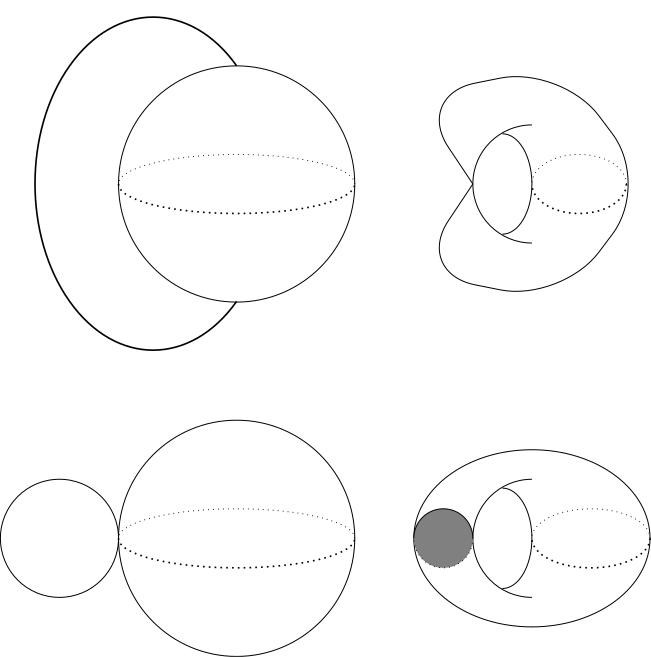4.02 Homotopy extension property (HEP)
Below the video you will find accompanying notes and some pre-class questions.
- Previous video: 4.01 CW complexes.
- Next video: 4.03 CW complexes and the HEP.
- Index of all lectures.
Notes
(0.00) In this section, we will introduce the homotopy extension property, a useful tool for proving that different spaces are homotopy equivalent. For example, you can use it to prove that the \theta-graph and the figure 8 are homotopic ``just by squishing the middle bar of the \theta to a point'' (see image below), or the a sphere with a 1-cell attached (joining the North and South poles) is homotopy equivalent to a pinched torus ``just by squishing the 1-cell to the pinch point''.

Homotopy extension property
(5.20) Constructing the map \(g\colon X/A\to X\). The subspace \(A\) is contractible, so there exists a point \(a\in A\) and a homotopy \(h_t\colon A\to A\) such that \(h_0=id_A\) and \(h_1(x)=a\) for all \(x\in A\). Since \(A\subset X\), we can think of this as a homotopy \(h_t\colon A\to X\).
(6.14) Using the HEP for the pair \((X,A)\), we get a homotopy \(H_t\colon X\to X\) such that \(H_0=id_X\) and \((H_t)|_{A}=h_t\). At \(t=1\), \(h_1(A)=\{a\}\) and \((H_1)|_A=h_1\), so \(H_1(A)=\{a\}\). Therefore \(H_1=g\circ q\) for some continuous map \(g\colon X/A\to X\) (in other words, \(H_1\) descends to the quotient).
(7.57) The fact that \(g\) is continuous follows from this section on continuous maps out of a quotient space (continuous maps from \(X/\sim\to Y\) are just continuous maps \(X\to Y\) which descend to the quotient). This map \(g\) is going to be our homotopy inverse for \(q\).
(8.20) The map \(g\) is a homotopy inverse for \(q\). We need to prove:
- (9.00) \(g\circ q\simeq id_X\): This holds because \(g\circ q=H_1\simeq H_0=id_X\).
- (9.22) \(q\circ g\simeq id_{X/A}\): Since \((H_t)|_{A}=h_t\),
the homotopy \(q\circ H_t\colon X\to X/A\) has the property that
\((q\circ H_t)(A)\subset q(h_t(A))\subset q(A)\). Since \(q(A)\)
is a single point, this implies that \(q\circ H_t\) factors as
\(\bar{H}_t\circ q\) for some continuous map \(\bar{H}_t\colon
X/A\to X/A\) (again, using our results on continuous maps out of
a quotient space).
(11.22) We have \(\bar{H}_0=id_{X/A}\) since \(H_0=id_X\). We want to show that \(\bar{H}_1=q\circ g\). We first notice that \[\bar{H}_1\circ q=q\circ H_1=q\circ (g\circ q)=(q\circ g)\circ q,\] which implies \(\bar{H}_1=q\circ g\) if we can cancel the extra \(q\)s on each side of the equation.
(12.34) We can cancel the \(q\)s because \(q\) is surjective (it's a quotient map) and surjective maps have right-inverses (so can be cancelled from the right).
Pre-class questions
- Assuming that you can use the HEP with impunity, which of the
following spaces are homotopy equivalent to one another?

Navigation
- Previous video: 4.01 CW complexes.
- Next video: 4.03 CW complexes and the HEP.
- Index of all lectures.